Transforming your compact space into a mini Japanese garden requires careful consideration and design. You’ll need to choose the right location, select authentic elements, and incorporate texture through rocks and gravel. By thoughtfully combining these aspects, you can create a serene retreat. Yet, the blending of traditional and modern elements poses challenges. How can you harmonize these styles while ensuring functionality? Let’s explore the essential components that will guide your transformation.
Choosing the Right Space for Your Mini Japanese Garden
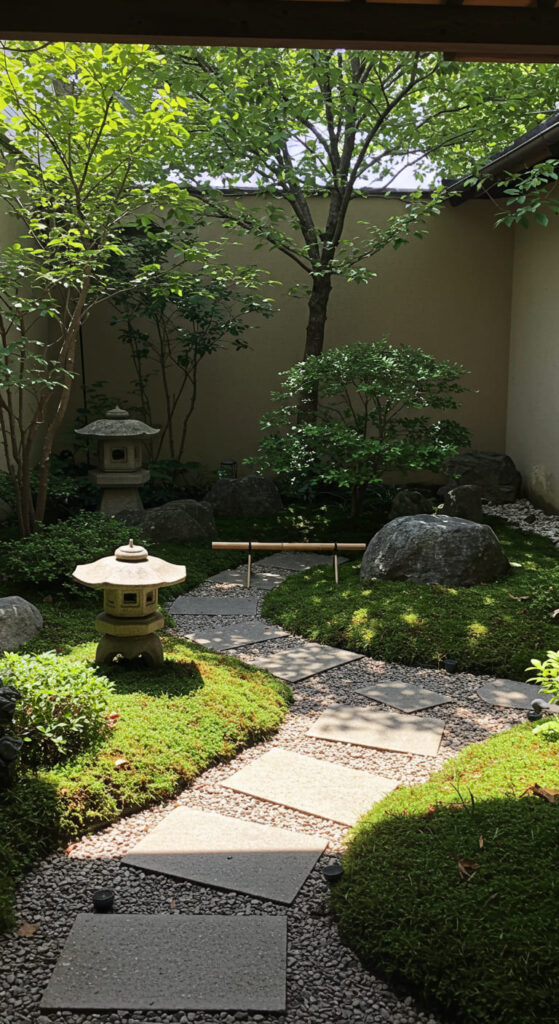
When considering the perfect spot for your mini Japanese garden, you’ll want to carefully evaluate your available space.
Focus on the garden layout and how it complements your environment. Measure your space dimensions to guarantee a harmonious fit, optimizing both aesthetics and functionality.
Consider sunlight, drainage, and accessibility, allowing you to create a tranquil oasis that reflects genuine Japanese design principles.
Selecting Traditional Elements for Authenticity
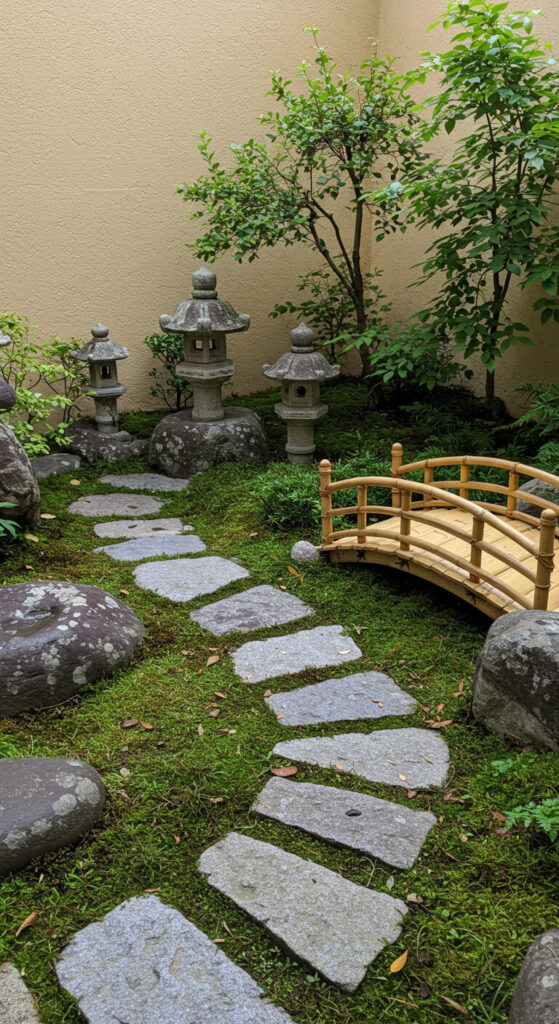
To create an authentic mini Japanese garden, you must thoughtfully select traditional elements that embody the spirit of Japanese aesthetics.
Incorporate Japanese elements like lanterns and bridges, using authentic materials such as stone and bamboo.
Reflect cultural symbolism with lush greenery, honoring historic influences.
Achieve elemental balance through careful placement, ensuring natural harmony prevails, making your compact space a serene retreat that resonates with tradition.
Incorporating Rocks and Gravel for Texture
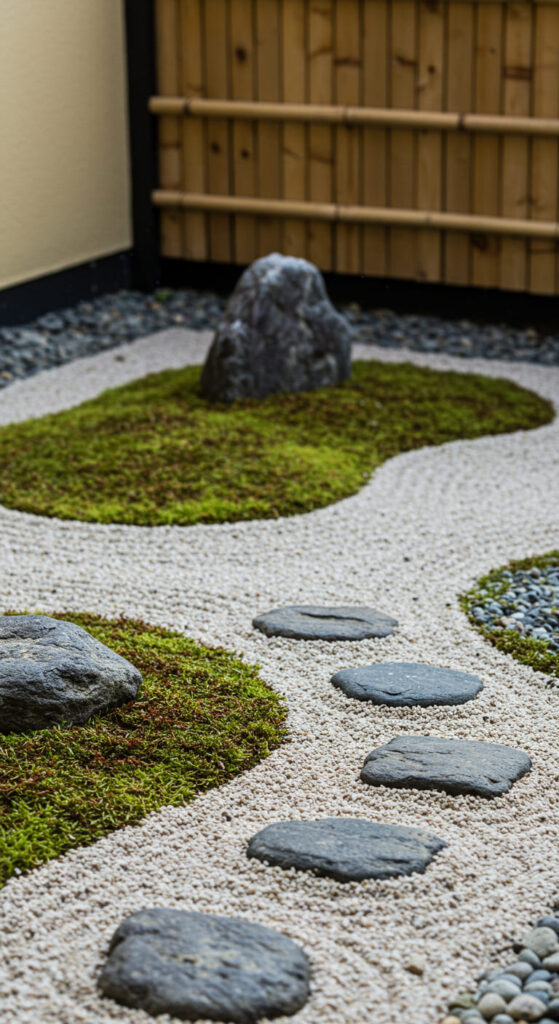
While creating a mini Japanese garden, incorporating rocks and gravel adds essential texture and visual interest that pays homage to traditional landscapes.
Focus on strategic rock placements to create focal points and contrast with soft gravel textures. Use coarse gravel to symbolize flowing water and fine gravel for paths, enhancing the overall aesthetic while inviting tranquility and meditation into your compact space.
Planting Low-Maintenance Flora
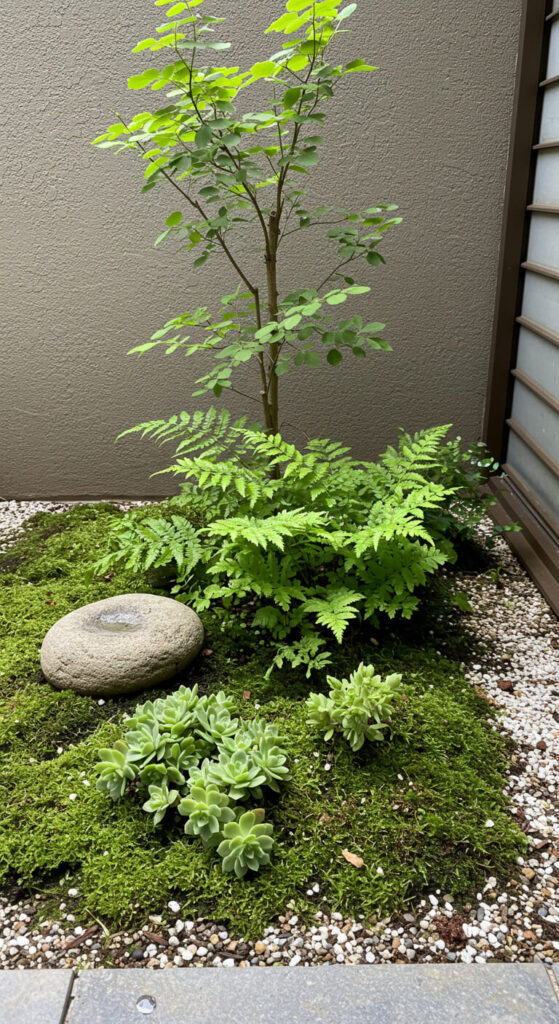
Creating a mini Japanese garden becomes more manageable and rewarding when you choose low-maintenance flora that complements the serene environment you’ve envisioned.
Consider succulent varieties, such as Echeveria and Haworthia, which thrive in minimal water.
Pair them with shade plants like ferns or Japanese forest grass, ensuring a lush yet effortless garden that offers tranquility without the hassle of extensive upkeep.
Adding Water Features for Serenity
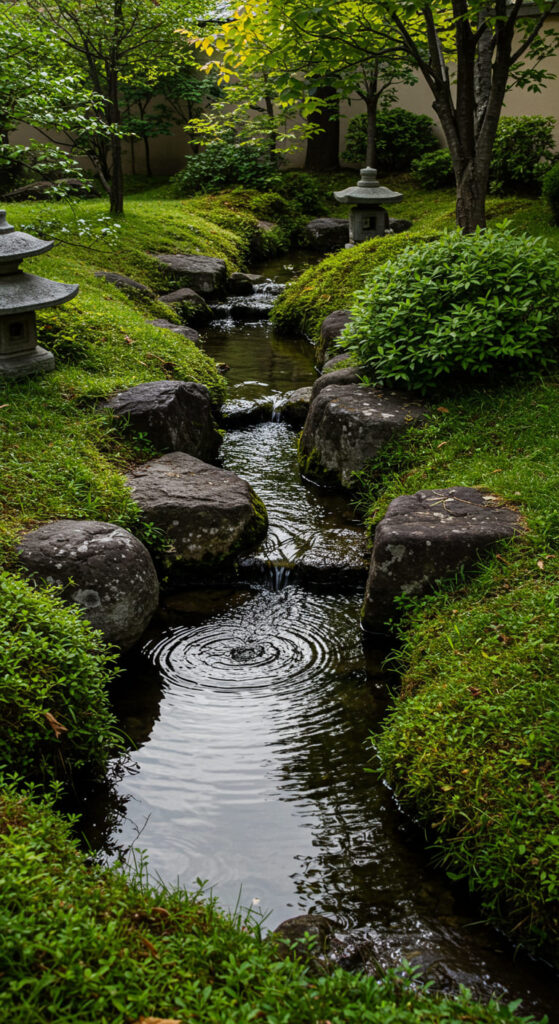
Incorporating water features into your mini Japanese garden enhances its serene atmosphere, inviting calmness and harmony.
You can add small ponds or tranquil streams to create soothing water sound that engages your senses.
A reflection surface, like gently rippling water, not only reflects surrounding beauty but also amplifies a sense of peace, making your garden a true retreat from everyday life.
Designing a Sand Garden for Minimalism
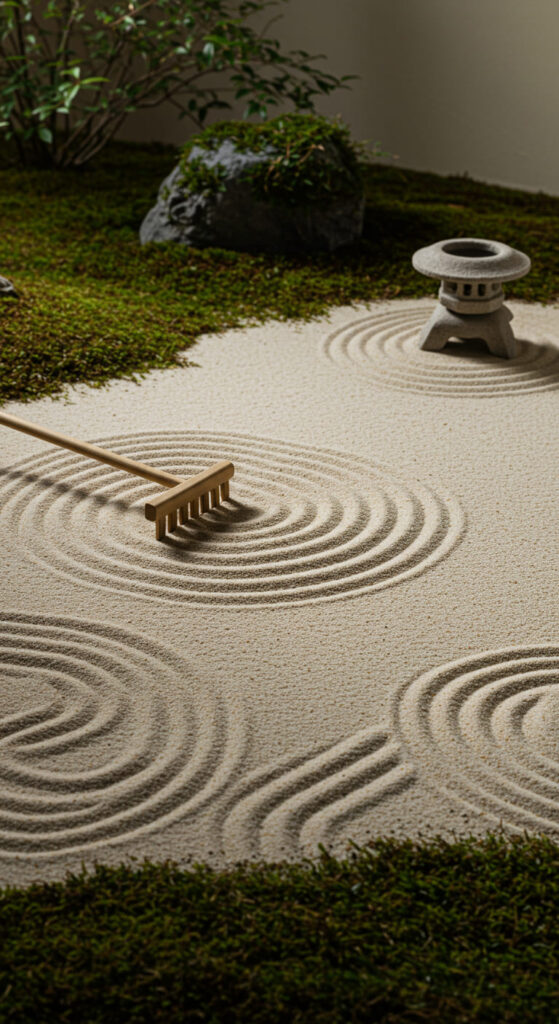
When you embrace the beauty of minimalism in your mini Japanese garden, designing a sand garden can provide a striking focal point.
Focus on creating intricate sand patterns using tools like rakes. These patterns symbolize water ripples and enhance minimalist aesthetics.
Choose smooth, fine sand for a clean look. Limit surrounding elements to highlight the simplicity and elegance of your design, inviting tranquility.
Utilizing Containers for Flexibility
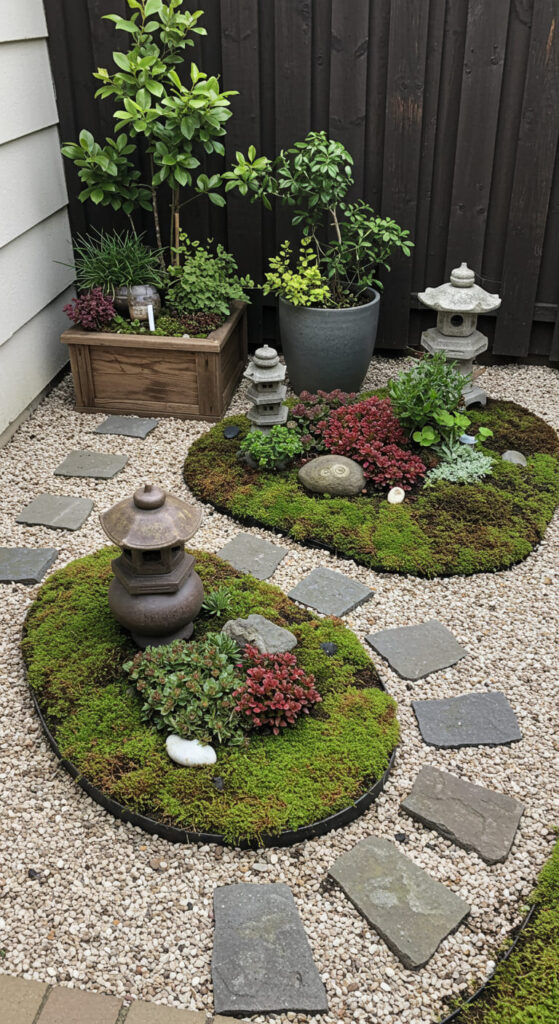
Containers offer incredible flexibility in designing your mini Japanese garden, allowing you to explore various layouts and arrangements.
By utilizing container types like ceramic pots, wooden boxes, or metal urns, you can create eye-catching focal points.
These flexible arrangements let you experiment with plant combinations and even alter the garden’s configuration seasonally, ensuring a dynamic, vibrant space that reflects your personal style.
Crafting a Zen Meditation Spot
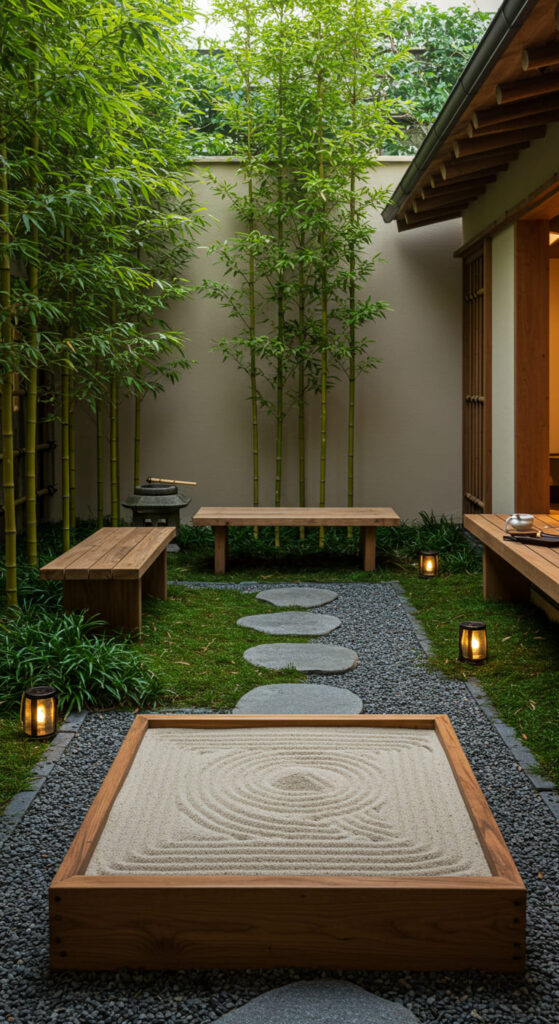
Tranquility is essential when crafting a Zen meditation spot in your mini Japanese garden.
Select smooth stones or a wooden bench for seating, promoting comfort during mindfulness practices.
Surround the area with calming elements like bamboo or a small water feature to enhance atmosphere.
Incorporate a sand tray for meditative raking, integrating meditation techniques that encourage focus and clarity in your serene sanctuary.
Integrating Pathways for Visual Flow
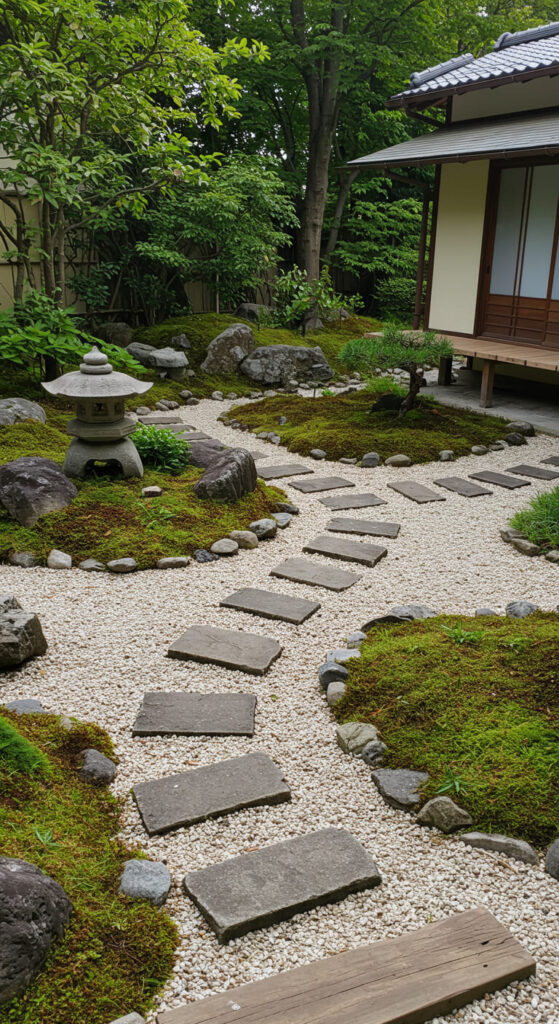
While designing your mini Japanese garden, integrating pathways can dramatically enhance visual flow and spatial harmony.
Choose pathway materials like gravel, stepping stones, or wood to create visual connections that guide the eye.
Arrange these pathways to lead visitors through the garden, connecting diverse elements harmoniously.
This deliberate layout not only invites exploration but also fosters tranquility, essential in any Japanese garden design.
Creating a Mini Tea Garden Experience
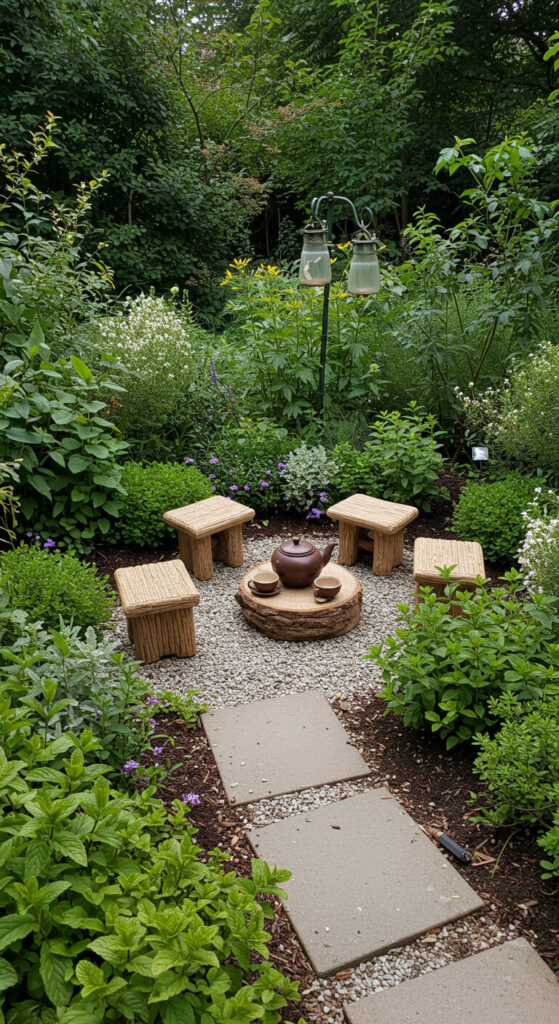
Incorporating a mini tea garden into your Japanese garden design elevates the overall experience, inviting relaxation and contemplation.
Choose a serene spot to arrange seating and use natural materials for a rustic touch. Surround your area with herbal plants, such as mint and chamomile, to enhance your tea ceremony.
These selections not only promote tranquility but also add aromatic elements to your peaceful retreat.
Using Bonsai Trees as Focal Points
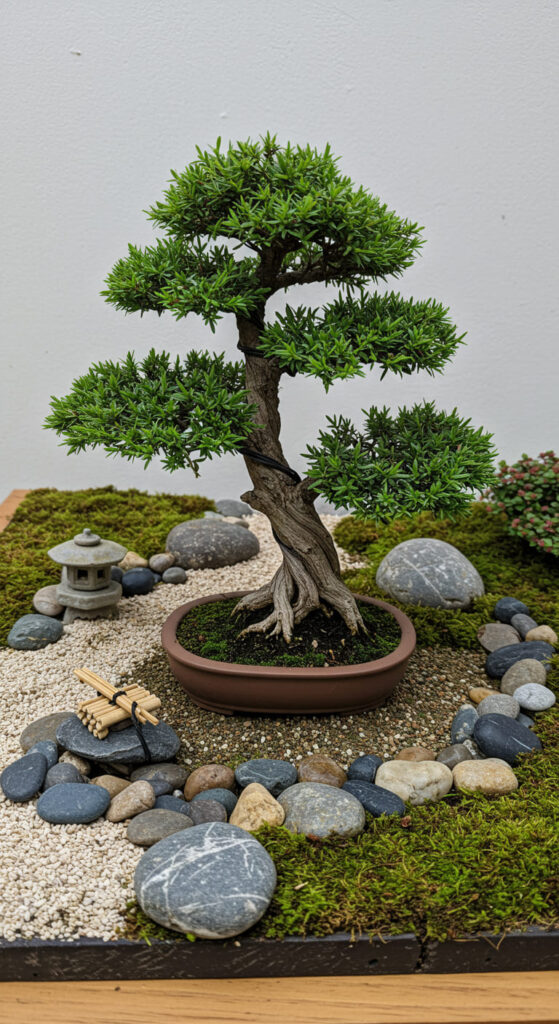
Bonsai trees serve as striking focal points in your mini Japanese garden, drawing the eye and infusing a sense of artistry into the design.
By mastering bonsai care, you not only maintain their health but enhance their bonsai aesthetics, creating an appealing centerpiece.
Position your bonsai thoughtfully amidst stones and water features to elevate visual interest and harmony while embracing nature’s beauty.
Implementing Lighting for Atmosphere
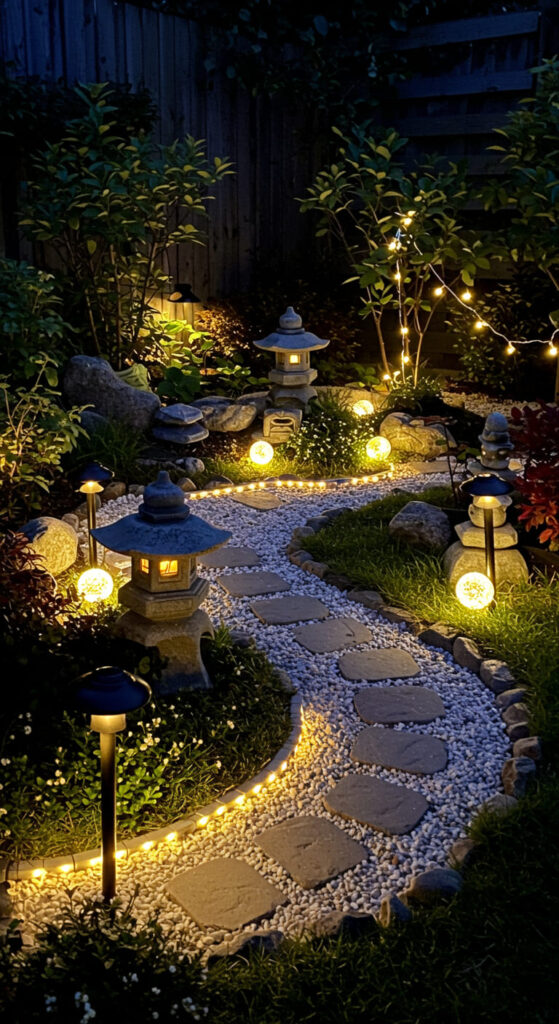
To truly enhance the atmosphere of your mini Japanese garden, consider how lighting transforms the space, creating depth and highlighting the intricate details within.
Use ambient lighting to create a soft glow that invites relaxation. Solar fixtures and strategically placed lanterns can illuminate paths, while LED strips along reflective surfaces provide low voltage options.
Don’t forget string lights for a whimsical touch, adjusting color temperature for desired warmth.
Selecting Seasonal Plants for Year-Round Appeal
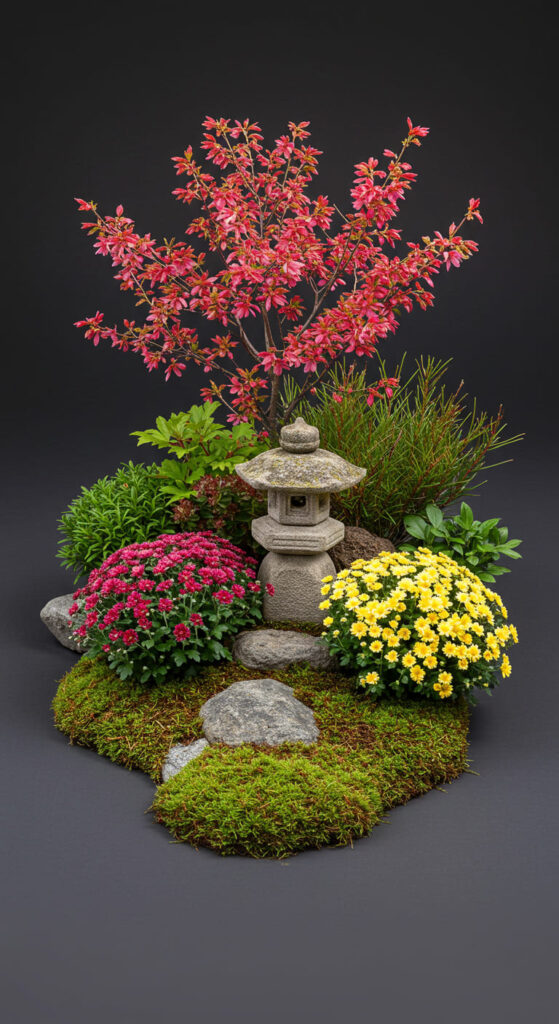
While selecting seasonal plants, you’ll want to guarantee your mini Japanese garden maintains its appeal throughout the year.
Choose a variety of seasonal blooms like cherry blossoms in spring and colorful chrysanthemums in fall.
Experiment with complementary plant combinations, ensuring foliage adds texture and interest.
This thoughtful selection creates a harmonious, vibrant display, making your garden a mesmerizing retreat in every season.
Incorporating Japanese Lanterns for Charm
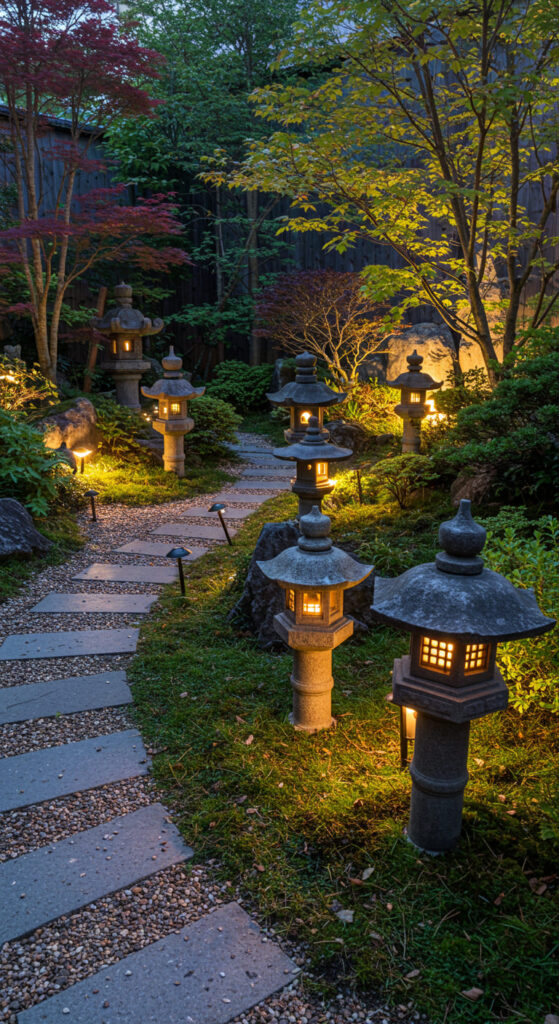
Incorporating Japanese lanterns into your mini garden not only enhances its aesthetic but also evokes the tranquil essence of traditional Japanese landscapes.
Consider various lantern styles, such as stone or metal, to match your garden theme. For effective lantern placement, position them near pathways or focal points, illuminating the serene beauty while guiding visitors through your compact sanctuary.
This creates a harmonious atmosphere.
Designing With Color Harmony in Mind
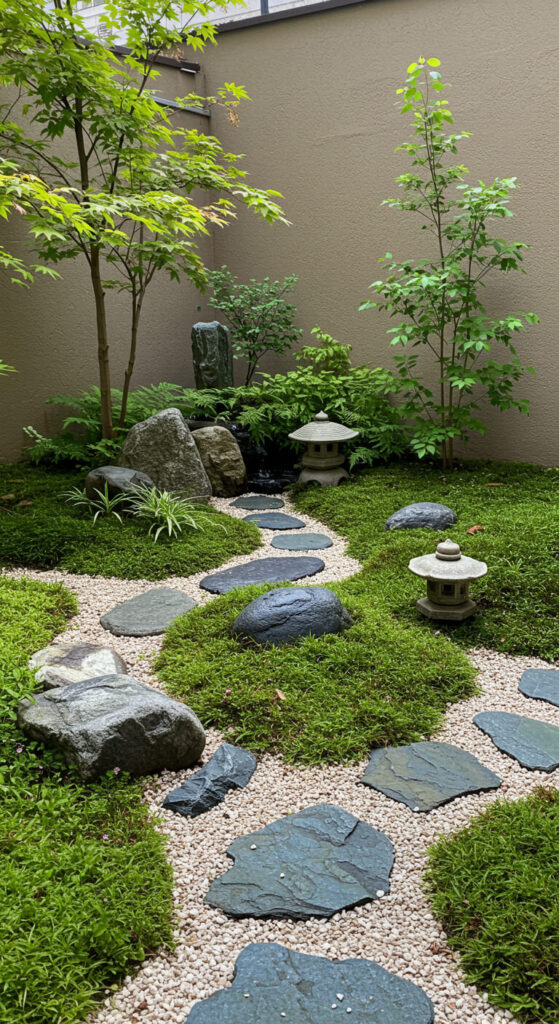
When you design your mini Japanese garden, keeping color harmony in mind can transform your space into a cohesive haven.
Select color palettes that resonate with nature, like soft greens, earthy browns, and soothing blues.
Aim for harmonious blending of plants, stones, and features to create visual serenity. This intentionality enhances your garden’s tranquility, inviting contemplation and peace amid the urban hustle.
Adding Koi or Decorative Fish
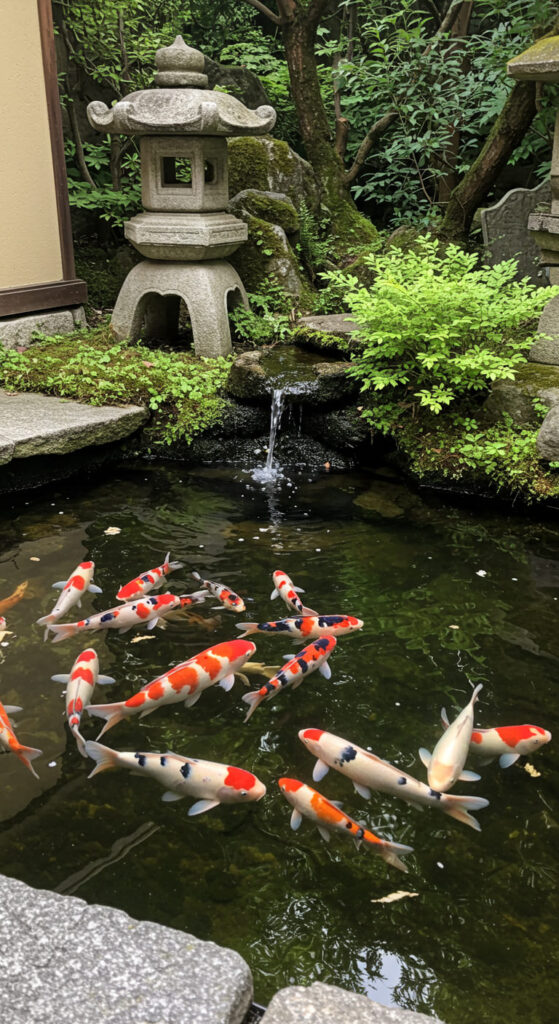
Koi fish can be the heartbeat of your mini Japanese garden, infusing it with movement and life.
Consider various koi types, such as Kohaku or Showa, for their beauty and personality.
To guarantee their well-being, prioritize proper fish care, including maintaining water quality and temperature.
Create a tranquil atmosphere, allowing your koi to thrive while enhancing the overall aesthetic of your compact space.
Incorporating a Mini Pagoda or Shrine
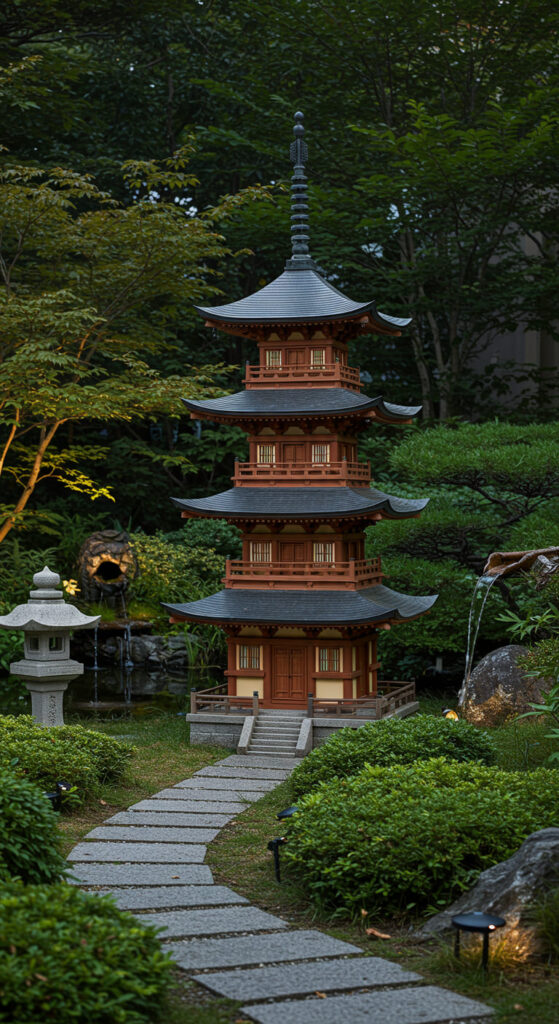
A mini pagoda or shrine adds a significant architectural element to your garden, enhancing its serene ambiance.
For effective mini pagoda placement, consider positioning it near water features or pathways, fostering harmony.
Each shrine symbolizes respect and tranquility, inviting reflection.
Practicing Symmetry and Asymmetry
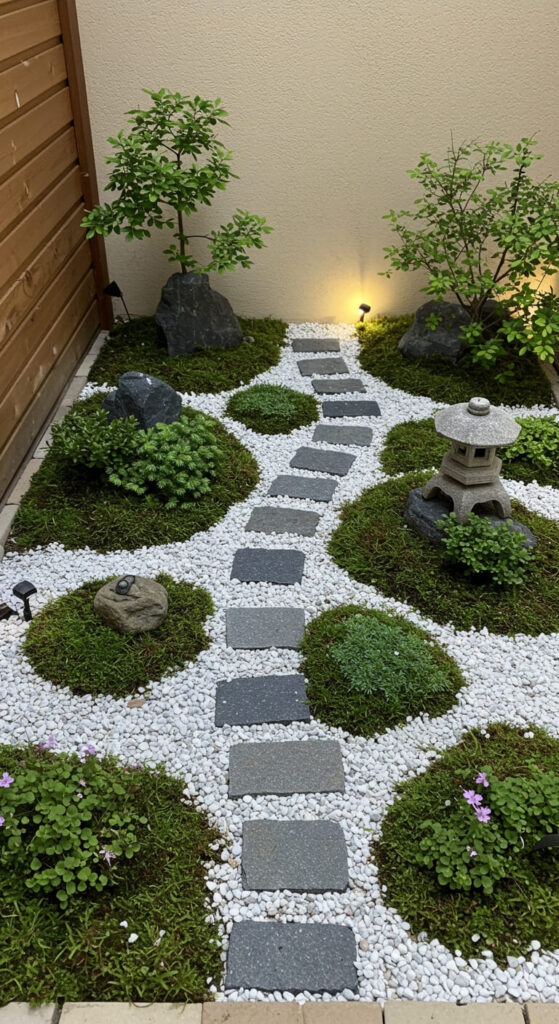
While achieving balance in your mini Japanese garden, practicing both symmetry and asymmetry creates a dynamic yet harmonious space.
Start by juxtaposing elements like stones and plants in balanced arrangements, emphasizing repetition and order.
Then, apply balance techniques with asymmetrical groupings that draw the eye, fostering visual interest.
This interplay enhances the garden’s serenity, inviting contemplation and appreciation within your compact oasis.
Creating a Sense of Scale With Miniatures
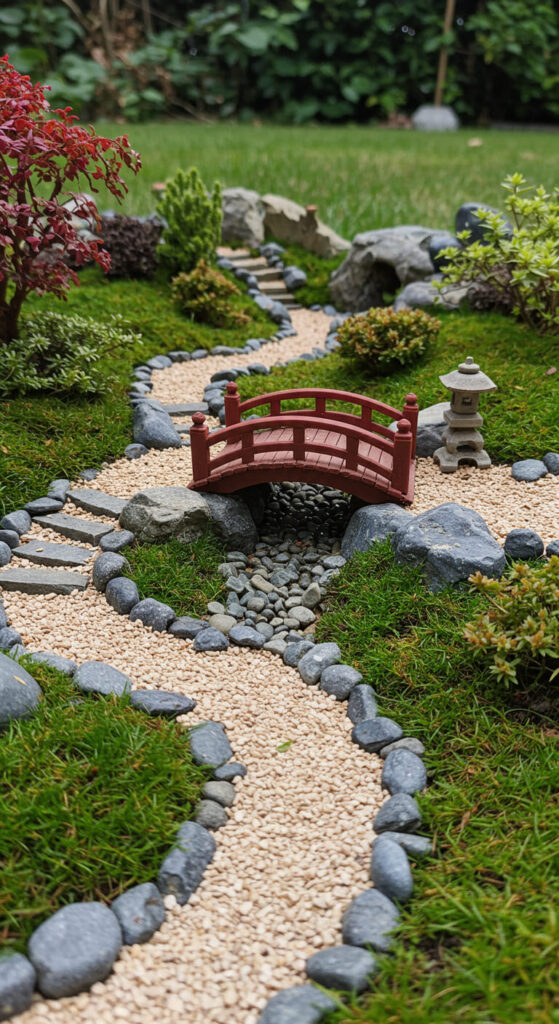
To create an engaging mini Japanese garden, understanding and manipulating scale with miniatures is essential.
You’ll craft miniature landscapes that evoke bigger settings, challenging your scale perception. Use elements like tiny bridges or small stones to visually balance the arrangement, making focal points stand out.
Maintaining Your Mini Japanese Garden
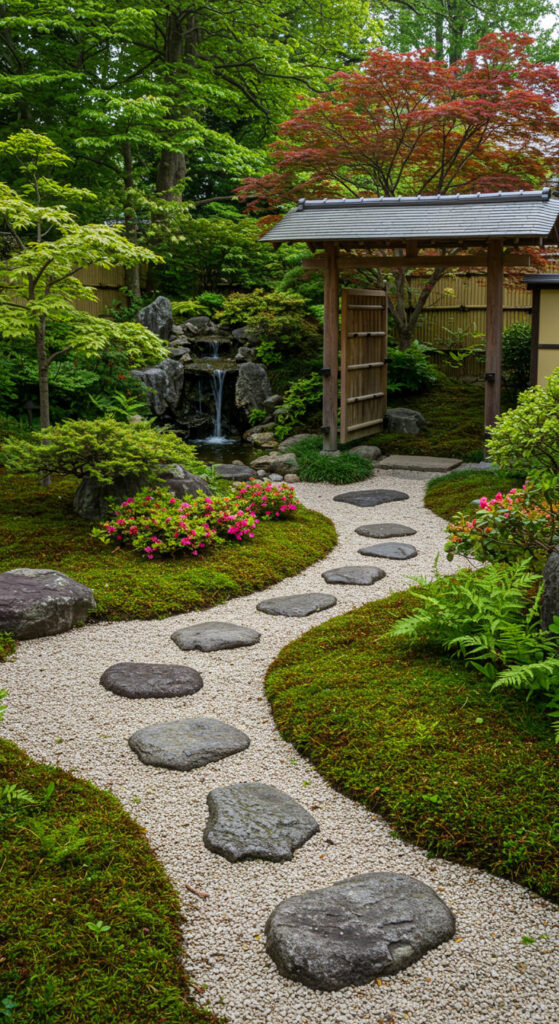
Maintaining your mini Japanese garden involves regular attention to guarantee its beauty and tranquility are preserved.
Employ pruning techniques to shape plants, ensuring they flourish without overcrowding.
Regularly assess seasonal adjustments—refresh gravel and reposition stones to reflect nature’s cycles.
With these practices, you’ll cultivate a serene sanctuary, enhancing both the aesthetic appeal and the harmony of your compact space.
Inspiring Themes: Modern vs. Traditional
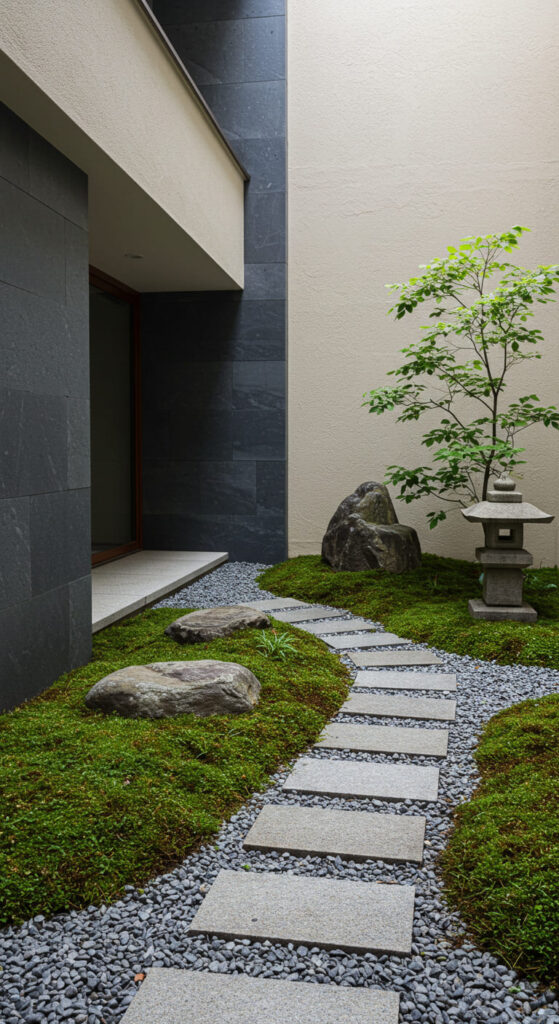
Creating a mini Japanese garden offers a unique opportunity to explore two fascinating themes: modern and traditional aesthetics.
You can embrace a modern aesthetic by utilizing sleek materials and geometric designs, emphasizing minimalism.
Alternatively, you might choose to honor traditional values, featuring natural stones and lush vegetation, evoking serenity.
Balancing these themes allows you to customize your space while reflecting your personal style.
Incorporating Artistry With Garden Ornaments
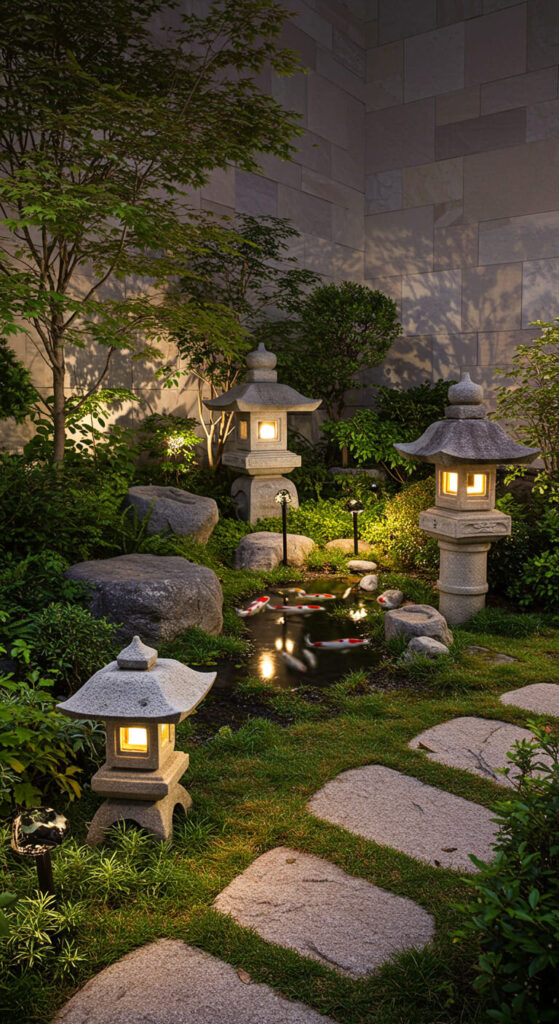
While curating a mini Japanese garden, incorporating artistry with garden ornaments can elevate the overall aesthetic and enhance the tranquil ambiance.
Consider adding artistic sculptures, like stone lanterns or koi fish, which hold cultural significance and reflect traditional Japanese elements.
Each piece not only beautifies your space but also invokes serenity, inviting contemplation and a deeper appreciation of nature’s harmony within your compact oasis.